Characteristics of firewood by type of wood
Firewood is a natural fuel that is becoming increasingly popular for heating homes. Each type of wood has its own combustion characteristics, heat output, ash content, calorific value, storage, and even aroma. At the same time, wood as a fuel has a wide range of applications. Natural raw materials can be used to heat a stove or fireplace in residential buildings, heat a garage, a bathhouse, and also for cooking. Let’s consider the most popular types of firewood and their characteristics.
Oak
At all times, oak raw materials have been distinguished by the highest value, which corresponds to the cost of the wood.
Oak is a dense and hard wood with the following characteristics:
- The material burns well and for a long time.
- It has the highest heat output compared to other types of wood.
- Slow burning and high calorific value significantly reduce fuel consumption.
- Sometimes it can be difficult to split oak logs.
- A fragrant smell that is beneficial for the person in the couple.
In fact, oak firewood is the hottest, but the high price does not allow everyone to use it for heating. Calorific value – 3240 kcal/dm3.
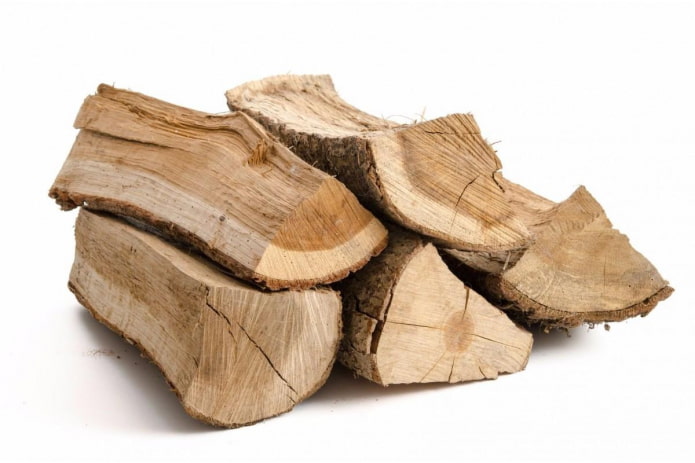
Ash
Ash wood surpasses even oak in combustion intensity. Such indicators are possible due to the fibrous structure in which air is located. Ash firewood dries quickly and burns evenly. At the same time, they leave a minimum of soot and dirt on the stove.
This is a universal option that can be used for almost any purpose. They can be used to clean the chimney. Ash belongs to the middle price category, but is not very common on the market. Calorific value – 3000 kcal/dm3.
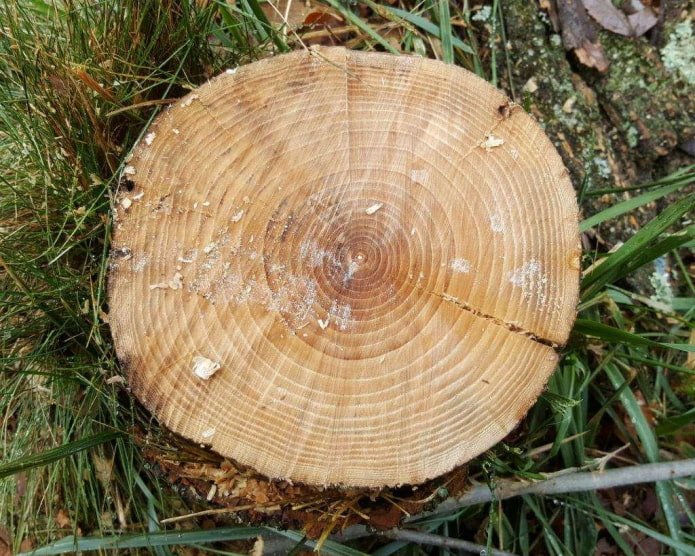
Linden
Compared to other types of wood, linden firewood is relatively difficult to light, but has high heat transfer rates. Linden is an excellent solution for a sauna. During combustion, a pleasant aroma is released, which has a beneficial effect on the respiratory system.
It has been proven that the esters that appear when linden is burned promote wound healing, but the wood has this effect for two years after being cut. Calorific value – 2040 kcal/dm3.
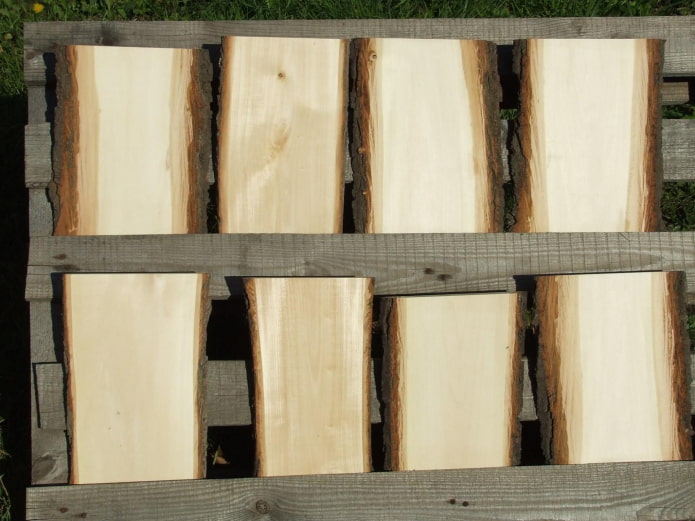
Aspen
Aspen firewood is in high demand, as it is often used for heating fireplaces and cooking on the grill. It has a moderate cost, but the raw material is slightly inferior in terms of heat transfer. The raw material is easy to ignite and burns out without the formation of soot and a large amount of ash with ashes.
Aspen firewood can be stored for many years without losing its quality. Calorific value – 1880 kcal/dm3.
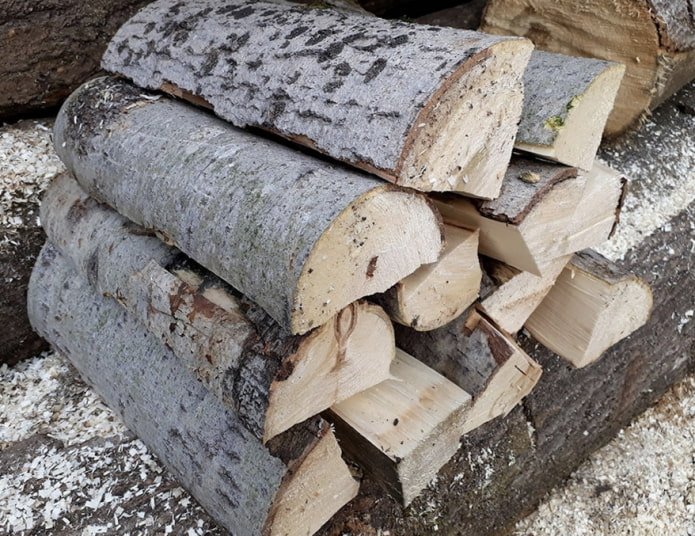
Poplar
Poplar is not a particularly valuable wood for heating, since it has low heat output. In fact, it is an unprofitable fuel. But with planned felling, the material can also be used to heat rooms.
When used, the wood burns quickly and there is a lack of heat, as a result, the consumption of raw materials is quite high. The wood sparkles and has a pleasant aroma, but is stored for no more than a year. Calorific value – 1600 kcal/dm3.

Beech
Beech, yew, hornbeam and maple are almost identical in their fuel characteristics. They belong to the category of hard deciduous trees, which makes them difficult to light. At the same time, beech firewood burns for a long time and gives off a lot of heat.
Such wood is quite expensive and not very common. But it is an excellent fuel option for severe winter frosts. Calorific value – 2720 kcal/dm3.
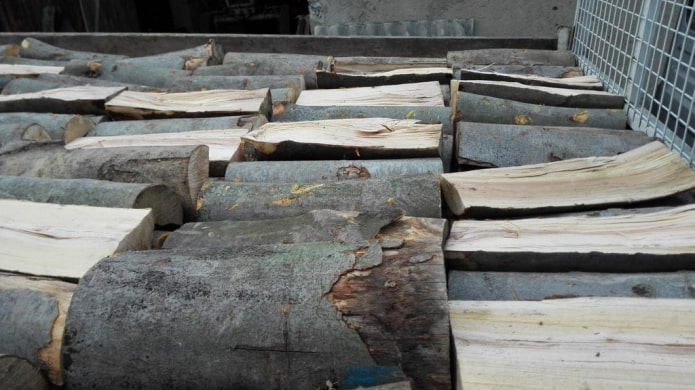
From fruit trees
Most fruit trees, such as apple, pear, plum and cherry, are hardwoods, which indicates excellent calorific value. The older the wood, the less of its original qualities remain in it, and young trees are preserved and used for their intended purpose.
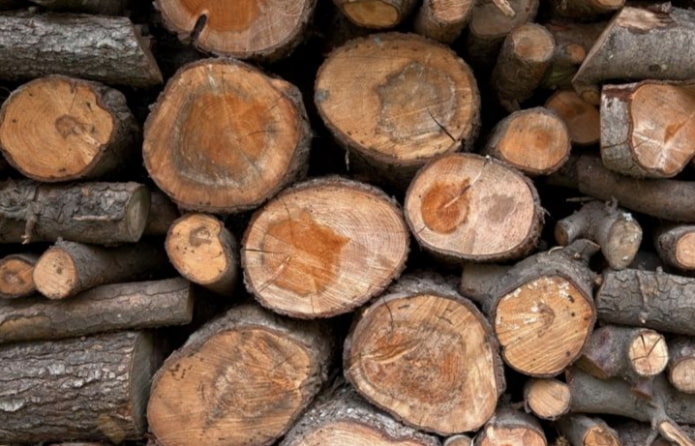
Fruit trees are the best fuel option for cooking on the fire and smoking products. They give dishes a pleasant aroma and taste. Calorific value ~ 2600 kcal/dm3.
Birch
Birch firewood is the most common and popular fuel with a wide range of applications. This wood grows in almost all regions of the country, which makes it an affordable raw material. Birch logs have a number of advantages:
- Wet wood splits without much effort.
- The material dries quickly.
- It has good heat output and an even flame.
- It produces a pleasant aroma during combustion.
- It has a relatively low price.
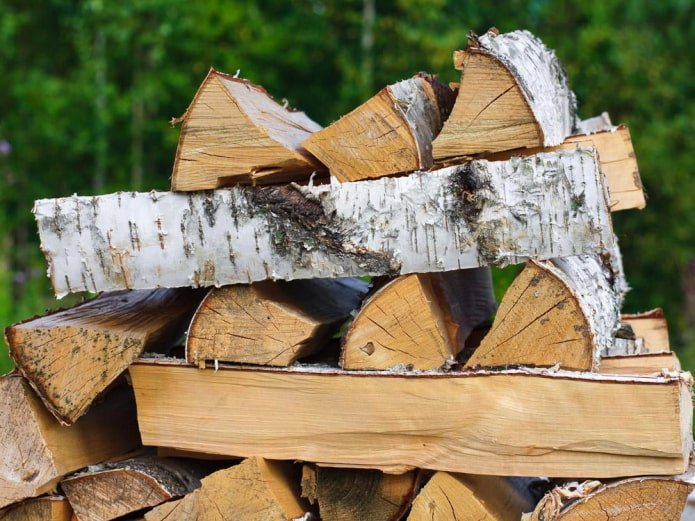
The logs can be used for stoves in the house, fireplaces and baths. Age has a negative effect on this type of wood, for example, even dried raw materials will become rotten in a couple of years. At the same time, the high tar content leads to severe clogging of the chimney. Birch firewood has a calorific value of about 2600 kcal/dm3.
Alder
Alder firewood is also highly sought after. The wood itself has a bright, recognizable orange color, sometimes with a reddish tint. Alder firewood has the following qualities:
- They dry quickly in a natural environment.
- They have a pleasant aroma when burning.
- The wood has good heat transfer properties.
- If stored correctly, the shelf life is quite long.
- During combustion, the raw material emits a minimum of smoke.
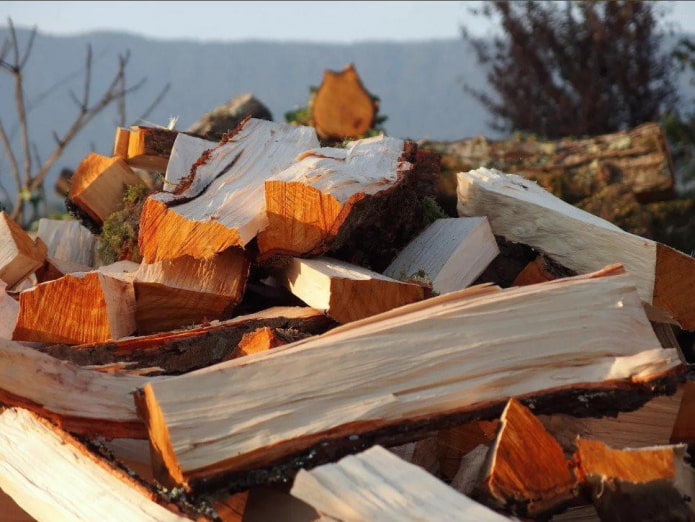
Used for heating and cooking. Calorific value – 2000 kcal / dm3.
Willow
Willow – also known as pussy willow, is extremely rarely used as fuel for the home. The plant has a loose structure of low grade, which has no practical application. Willow is not even used for making a fire. During combustion, sparks and a characteristic sound are often seen. The wood burns quickly and gives off virtually no heat.
Buying such firewood for the stove is extremely unprofitable due to high consumption. Calorific value – 1840 kcal/dm3.
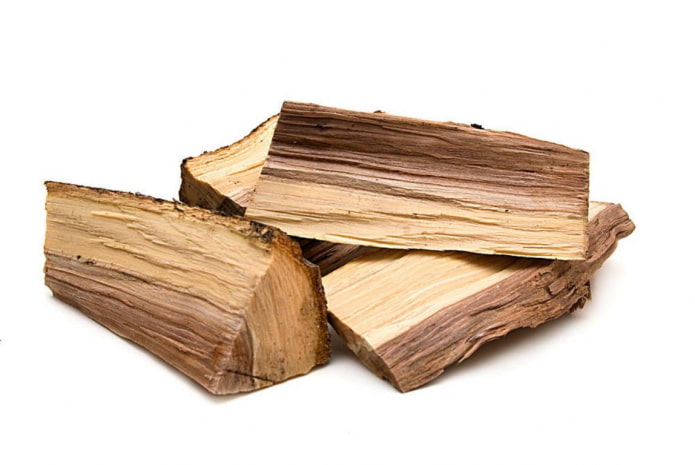
Coniferous
Coniferous wood contains a lot of resin, which improves the combustion process. During heating, the internal resinous niches can burst and spray a mixture of compounds contained in the composition. Because of this, spruce, pine and other coniferous firewood are not the best option for fireplaces and open fireboxes. Also, due to the high soot and characteristic aroma, it is not used for barbecues.
Coniferous wood is great for heating, as it has an optimal ratio of price and heat transfer. Among coniferous species, larch has the greatest value due to its high combustion temperature. But with constant use of such fuel, it will be necessary to frequently clean the chimney from soot.
Advice! When regularly heating the house with pine or spruce firewood, you need to periodically burn alder or aspen logs in the stove. This will clean the chimney from soot.
The positive effect of essential oils of coniferous species can also be noted. A mixture of volatile substances from the composition allows you to heat the stove and carry out health treatment of the room. Calorific value – 1800-2640 kcal/dm3.
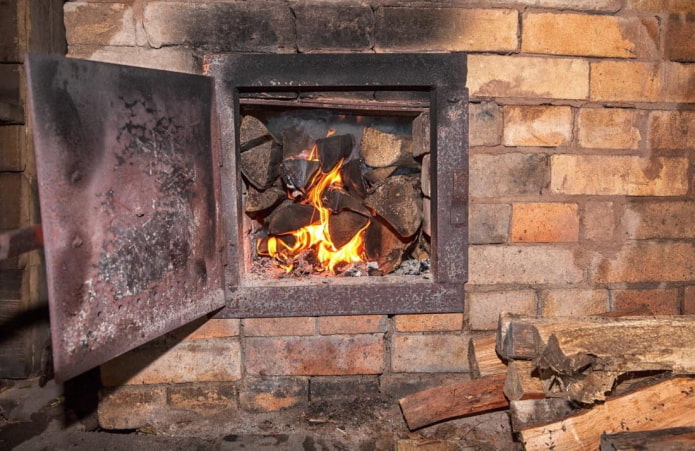
How to harvest it correctly?
Of course, to harvest firewood for a stove or fireplace, there is no need to go to the forest and fell trees. Moreover, it is illegal. There are many companies now that sell finished wood. The raw material can be supplied in the form of whole logs, blocks or split logs. The last option is the most convenient, since the customer will receive ready-to-use firewood, which can be simply stacked in a woodpile.
It is important to pay attention to the stacking in the truck body; if the logs are simply piled up, you will have to pay not only for the firewood, but also for the air between them. It is important that they are neatly stacked without any voids.
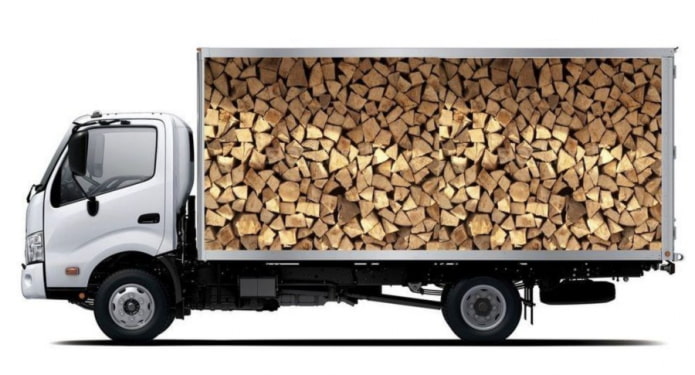
It is recommended to prepare firewood for the stove during the warm season, which will allow it to dry to optimal levels. If you order raw wood in the form of logs or logs, it is advisable to saw and split them immediately, since it will be extremely problematic to do this after drying. When buying wood, you need to focus on dry fuel, this will allow you to use it right away, especially if the harvesting is carried out in the fall.
It is always advisable to calculate the exact amount of wood that will be needed for the entire winter. There is no point in making large reserves, since over the years, the tree loses its original qualities or may even get cold.
A private house, like a summer house, requires the arrangement of a special place for storing material. For this, you will need a barn or woodpile. It is important that it is located near the house or boiler room. In winter, when everything is covered with snow, this location will simplify the task of bringing in fuel.
Storage recommendations
Buying high-quality wood is only half the battle, you need to know how to properly store it without losing its original qualities. Proper arrangement of a place for storing firewood will not take much time, since even primitive woodpiles made by hand will do. Moreover, there are technologies for stacking firewood in the form of haystacks, which will make them a decoration of any site.
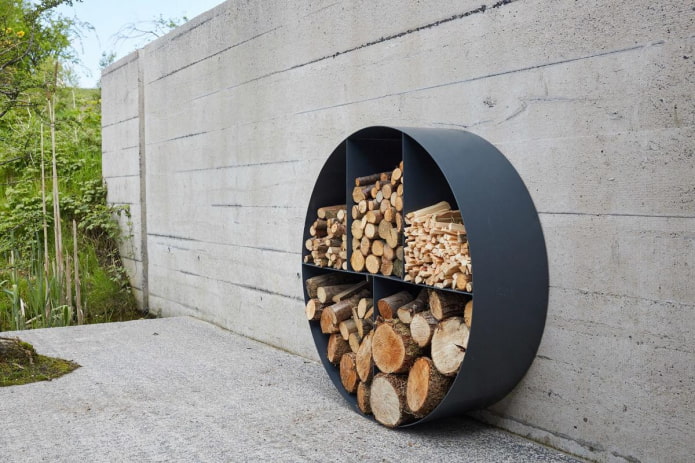
Tips on the location of the woodpile:
- The structure for storing wood should not be installed in a lowland where moisture can accumulate. This can lead to the fact that the firewood will become damp and will burn poorly or even rot. Accordingly, you should not expect a pleasant aroma and good heat.
- It is important that the woodpile is protected from precipitation. At a minimum, it should have a roof, let it be a piece of slate or roofing felt, but rain should not fall on the heating material. You can also use special laying techniques that will not allow water to flow into the rows.
- For long-term storage, it is recommended to stack logs in rows to ensure good air circulation. Accordingly, you should not place rows end to end.
Rules for stacking firewood:
- Split logs after splitting should not be stacked in a woodpile. It is advisable to let them lie scattered in the sun for several weeks and dry well.
- If the wood was harvested in winter, then sawing and splitting is performed only in the spring. This is necessary so that the wood retains its original properties.
- The main rule is that firewood should only be stored in split form with a thickness of up to 15 centimeters. You don’t have to split logs with a diameter of less than 15 centimeters.
- You should only bring them into a barn or stack them in a woodpile at the end of summer or the beginning of autumn. In this case, the raw material will be as dry as possible.
- If you don’t have a full-fledged woodpile, the material can be stacked in rows in the open air. The main thing is to put logs or pipes underneath, which will eliminate direct contact with the ground. They will also need to be protected from precipitation.
- The first row of logs should be 2-4 centimeters from the ground surface. This will prevent the raw material from absorbing moisture.
- When creating several rows, it is recommended to maintain a slight slope towards the previously laid row. This will minimize the possibility of collapse.
- Separations are needed on the sides of the rows, which will prevent the material from crumbling.
- You don’t need to close the woodpile tightly, since the wood needs ventilation.
- It is important that there is a thick protective layer on top of the rows: slate, sheet metal, etc.
These simple tips will help protect the wood from moisture and ensure optimal storage conditions.
What to look for when buying?
The process of purchasing wood is the most important, since the heat transfer and preservation will depend on the quality of the purchased solid fuel. To avoid problems, you should pay attention to the following points:
Type of delivery
When ordering, it is advisable to clarify in what form the material will be delivered: neatly stacked in the back of a truck or simply thrown together. It is important to understand that delivery in bulk will strip up to 30% of the actual volume. In practice, this will take about 0.7 cubic meters of wood from the back of a truck. In this case, you will have to partially pay for air.
It is known that many suppliers do not want to waste time on stacking and estimate the volume by eye, thereby deceiving customers. It would be a good idea to measure the delivered firewood before unloading. This way, you can protect yourself and reduce costs. It should be understood that this is a very common type of fraud. Accordingly, it is necessary to purchase wood only from trusted companies and preferably from existing stock.
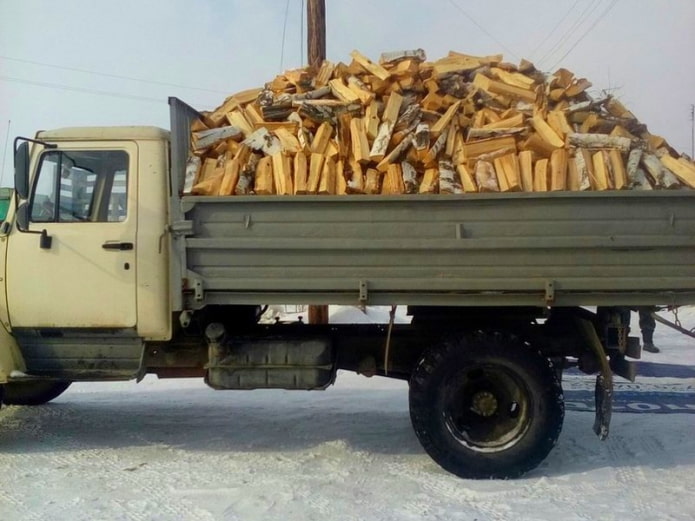
Origin of firewood
It would be a good idea to clarify in what area the trees were cut and whether logs from a burnt forest are being sold. The fact is that the burnt trunks will remain in the soot, which will constantly have to be carried into the house. Based on this, when unloading, it is necessary to check whether there are any places where the bark is burning.
Humidity
This is the most important criterion. In practice, it is important for the customer to understand what he is buying: freshly cut wood, young plants or completely dry wood. Only cut firewood will have a humidity of about 50%, which will not allow them to be immediately used for heating the stove, since the raw material is problematic to ignite and it is almost impossible to achieve the desired calorific value.
The best solution is to buy dry firewood with a humidity level of less than 25%. There are even special devices for measuring this indicator.
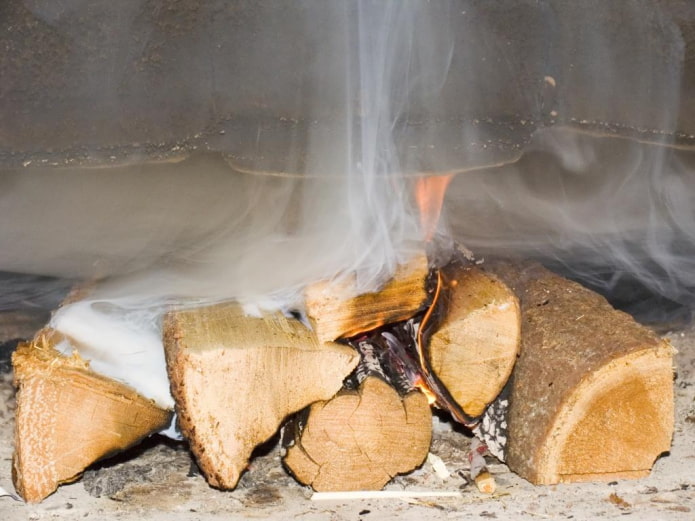
The combustion of 1 kg of wood with raw fibers gives about 1 kilowatt of energy, but the same kilogram of dried firewood will give about 4 kilowatts. Accordingly, the heat transfer rate differs by 3 times. You need to know this when ordering.
Species
It should be noted that hardwood (acacia, oak, elm, birch) will provide 2 times more heat transfer than softwood (poplar, pine, willow). The last category can be used as kindling, but not as the main fuel.
The whole point is in the density of the wood. For example, 1 cubic meter of pine will weigh 250 kg, while 1 cubic meter of oak will weigh 500 kg. Accordingly, soft varieties will cost more.
Size
Each person can order natural raw materials for different purposes: a bathhouse, a stove, a barbecue, a boiler, a fireplace, etc. In each option, the size of the firebox can vary significantly. Because of this, when ordering, it is important to note what length and diameter of chopped logs are required.
The standard is considered to be a length of 35 cm and a thickness of up to 12 cm.
Price
Before ordering, you need to do a little market monitoring and ask the price. This will allow you to determine the average price for a certain category of firewood. But if the price from one supplier is extremely low, this is not a tempting offer on the market, but a potential fraud.
Often, illiquid goods that do not meet the required quality are sold at reduced prices. Consequently, excessive savings can become even more costly when buying a new batch of firewood.
Rating of firewood by area of application
Almost any type of wood can be used to heat a house. However, natural raw materials have different areas of application, which dictate certain rules. Let’s consider in more detail where and what type of wood is best to use.
For a bathhouse
The main task of fuel for a bathhouse is to quickly heat the room to high temperatures. Hardwoods are perfect for this purpose. At the same time, the emitted aroma, which exhibits penetrating properties and has a beneficial effect on human health, is not the least important factor.
Best options:
- Alder – will provide high temperature and stable heat. At the same time, the firewood will not smoke. Essential oils have a therapeutic effect.
- Birch – kindling firewood is simple. At the same time, the use of this raw material guarantees good coals and uniform combustion. Logs are easy to split and dry.
- Willow – despite low heat output, they will provide light steam and an atmosphere of comfort.
At the same time, it is not recommended to use oak firewood, since the logs burn for a long time and also produce a lot of carbon monoxide.
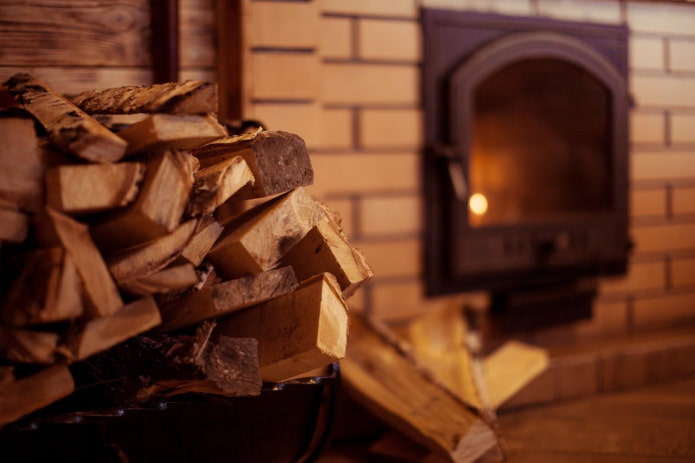
For a garage
There are no special recommendations for heating this room. You can even use wood chips and bark.
The main thing when choosing is to focus on the size of the installed firebox. For quick heating, it is recommended to use dry fuel, which will give good heat.
For the fireplace
Not all types of wood are suitable for a comfortable time spent by the fireplace. The best option is deciduous trees. But during the heating process, it is advisable to follow these recommendations:
- The size of the logs should be slightly smaller than the depth of the fireplace.
- Initially, you need to light the chips with paper.
- It is better to arrange the material in the shape of a pyramid.
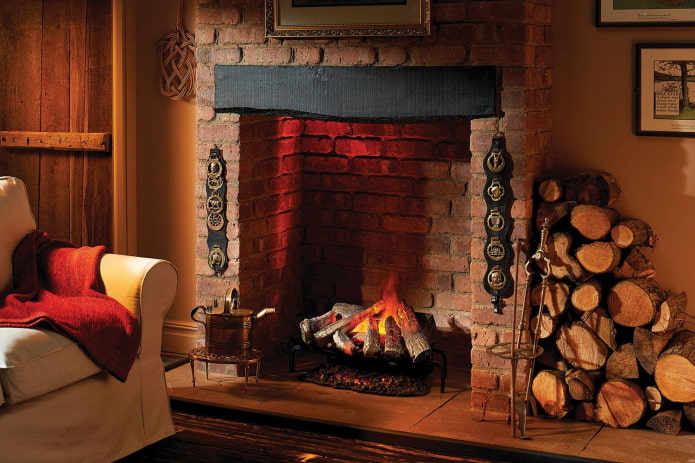
For safe use of the heating device, it is necessary to regularly service the chimney and the fireplace itself. This will provide protection from carbon monoxide.
For cooking
To cook dishes on a tandoor or barbecue, it is important to choose dry logs with minimal resin content. It is desirable that they emit a small amount of smoke and have a pleasant aroma.
It is worth emphasizing that coniferous trees can be completely deleted from this list. For example, special equipment for cold and hot smoked dishes, known as a smokehouse, involves the use of fruit trees such as pear or apple.
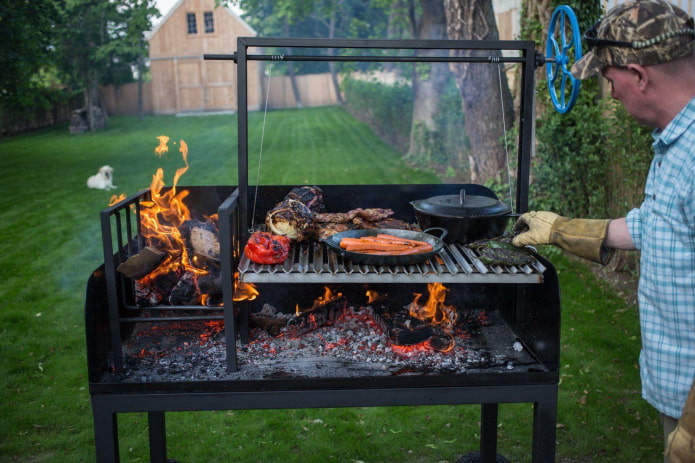
As a result, we can say that all types of wood have their own characteristics and main areas of application as fuel. To get high-quality firewood, you should responsibly approach the selection, storage and use of natural raw materials.
Now reading:
- 12 compact plants that will become a real decoration of your garden.
- 10 Leroy Merlin Products You Should Avoid
- Choosing a dishwasher: from size to noise level – everything you need to know.
- Design ideas for 35 sq. m: more than 60 photos of one-room and studio apartment interiors.
- Creative Ways to Create Shade in Your Yard